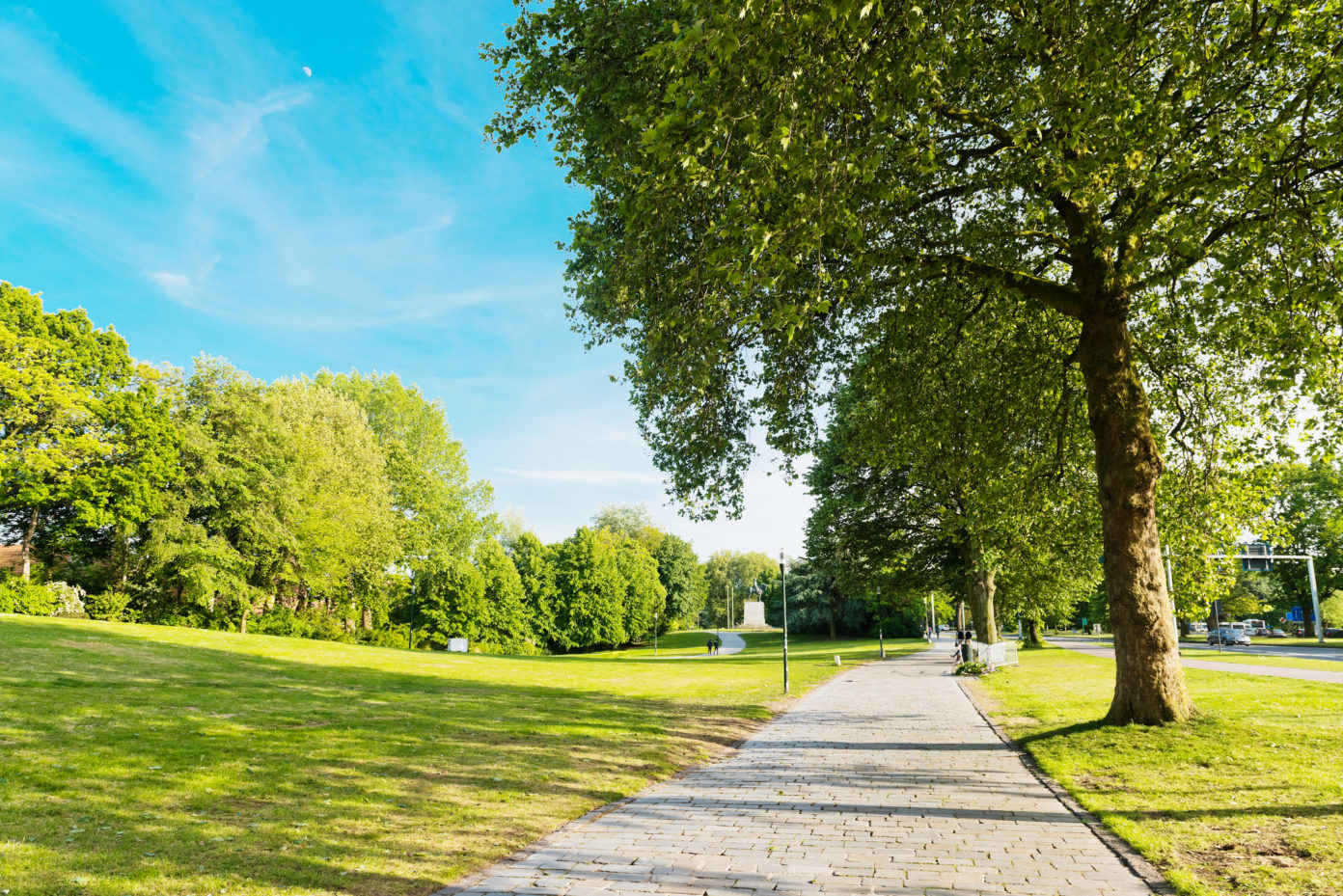As Temperatures Rise, Equitable Tree Cover can Help Mitigate the Health Risks from Urban Heat Islands and Address Health Inequities within Communities
January 30, 2020
Overview
Trees are beautiful, but are they also a cure for climate change related health hazards? We know that trees beautify urban spaces, increase property values, reduce stress, improve mental health, and benefit communities by reducing crime rates and increasing social cohesion. But tree cover can also provide significant cooling benefits to offset dangerous temperatures during extreme heat events, which are on the rise in urban areas as a result of climate change. The cooling benefits of trees can be felt in lower surface and air temperatures in areas shaded by tree canopy and reduced peak summer temperatures due to evapotranspiration. This cooling can help reduce heat related respiratory difficulties, heat exhaustion, heat stroke, and heart attack – which can kill more people yearly than other weather related disasters.

Not only do trees provide a cool space to escape the heat, their presence can take carbon dioxide out of the air, reduce air pollutants that contribute to asthma, lower electricity and fossil fuel usage, reduce energy bills for those most heavily burdened by electricity costs, and alleviate heat stress for individuals without air conditioning. Trees can also mitigate the potential threat of flooding in urban areas, where flood potential can be higher due to the greater percentage of impervious surfaces.
Many communities are facing decreases in tree populations, and are enacting policies to stem the loss and increase new tree canopy, including treating trees as infrastructure. Seattle limits the number, size and type of trees that can be removed, particularly in shoreline and wetland areas and areas prone to erosion or landslide. County landscape ordinances can establish minimum tree standards and require the planting of trees in energy conservation zones. Tree planting or urban forestry plans are being developed to incentivize or mandate tree canopy, prescribe tree maintenance and care protocols, or prioritize the use of government funds to more equitably distribute street trees and other trees planted on government properties. When funding becomes a barrier to meeting tree planting goals, some communities are piloting carbon credit programs that utilize carbon credits paid for by the private sector to fund tree planting and maintenance.
Currently many cities have an inequitable distribution of trees. Low income communities and communities of color often live in areas with a high percentage of hot impervious surface or limited tree cover, leaving these communities with higher exposure to extreme heat and flooding. Historically redlined neighborhoods (these neighborhoods were deemed hazardous for real estate investments in the 1930s based on racial makeup of the neighborhood) are on average 5 degrees hotter, and in some cases more than 10 degrees hotter, than the neighborhoods with higher percentages of white residents. Some environmental justice communities have identified the inequitable distribution of trees as a justice and health concern that should be addressed in climate adaptation planning. To reduce these inequities, city parks departments may prioritize the planting of street trees for the benefit of public health in neighborhoods with high asthma rates and low tree coverage, or prioritize tree planting near schools in low-income and minority neighborhoods.
Trees – a natural antidote for many climate change ills – are a key public health solution to protect our most impacted communities.
This post was developed by Betsy Lawton, J.D., Senior Attorney, Network for Public Health Law – Northern Region Office.
The Network for Public Health Law provides information and technical assistance on issues related to public health. The legal information and assistance provided in this document do not constitute legal advice or legal representation. For legal advice, readers should consult a lawyer in their state.
Support for the Network is provided by the Robert Wood Johnson Foundation (RWJF). The views expressed in this post do not necessarily represent the views of, and should not be attributed to, RWJF.
